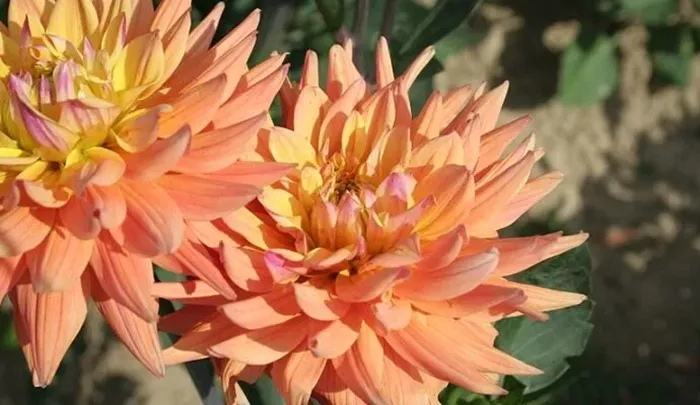Columbia, Mo. – As autumn approaches and many garden flowers begin to fade, dahlias reach their peak, displaying their most vibrant colors, according to David Trinklein, a horticulturist with the University of Missouri Extension. The warm days and cool nights of late summer and early fall help dahlias produce blooms with vivid, intense colors.
“September is the perfect time to enjoy the dahlia’s burst of color,” said Trinklein. He encourages those who don’t already grow dahlias to start planning for next spring.
Dahlias, part of the aster family, are the national flower of Mexico. The Aztecs cultivated dahlias long before the Spanish arrived in the 16th century. Spanish conquistadors brought the flower back to Europe after discovering it in Mexico.
Early dahlias imported to Europe had single flowers. With hybridization, double-flowered forms and new color combinations soon emerged. Today, dahlias offer one of the largest varieties of flower forms, colors, and sizes in the world of cultivated plants, with more than 50,000 named cultivars.
“When people think of dahlias, they usually picture tall varieties grown from tuberous roots,” Trinklein said. “These types are often found in cutting gardens or used as backdrops for borders.” However, their height and large flowers mean they require support, such as staking, to prevent them from toppling.
In recent years, dwarf or bedding dahlias, which are propagated from seeds, have gained popularity. These plants produce an abundance of small flowers on bushy stems, making them ideal for flower beds or the front of borders. Although these types of dahlias also develop tuberous roots, many gardeners don’t save them from year to year, as inexpensive plants are readily available each spring, Trinklein explained.
Planting and Growing Tips
Dahlias thrive in locations with good air circulation, at least six to eight hours of direct sunlight, and protection from strong winds. Plant tuberous roots of larger dahlia varieties about two weeks before the area’s last frost-free date. Since dahlias cannot withstand freezing temperatures, avoid planting outdoor-started dahlias until all danger of frost has passed.
These flowers grow best in fertile, well-drained soils rich in organic matter. If your soil lacks organic matter, mix in up to 4 inches of well-rotted manure, compost, or similar material before planting.
For planting, Trinklein recommends incorporating about half a cup of fertilizer high in phosphorus and potassium, but low in nitrogen (such as a 5-10-10 blend), into the soil in a 2-foot circle where each plant will be located. Add a second application of the same fertilizer in July. Dahlias grow quickly and need consistent moisture, so keep the soil moist, but avoid overwatering.
Pruning for Health and Beauty
Pruning is essential for healthy, beautiful dahlias, but the method depends on how you plan to use the flowers. For exhibition flowers, prune the plant to one main stem. For a lush garden display, pinch the plant after it reaches about 1 foot in height in the spring. A second pinch, after the shoots grow to 1 foot, delays flowering but creates a more impressive display later in the season.
Common Pests and Diseases
Dahlias are susceptible to certain diseases, including botrytis (gray mold) and powdery mildew, both of which affect the plant’s foliage. These diseases can be prevented through proper site selection, keeping foliage dry, and maintaining garden cleanliness. Fungicides containing thiophanate methyl can also be effective, Trinklein noted.
Some viral diseases, like dahlia mosaic virus, can also affect the plant. These viruses are often spread when gardeners save dahlia tuberous roots from year to year. Sanitation, pest control, and selecting tolerant cultivars help manage these diseases.
Overwintering Dahlia Roots
Because dahlias cannot tolerate frost in Missouri, their tuberous roots must be dug up and stored each fall after the plants die back. Once dug, wash off any remaining soil and let the roots dry in a shaded area, not in direct sunlight. Separate the tuberous roots by cutting them from the main stem, ensuring the part with the eyes remains attached. Dust the cut ends with a fungicide to prevent storage diseases.
Alternatively, you can store the entire root system intact and separate them before the next growing season. Store the roots in moist peat moss, sawdust, or another inert material in a wooden or cardboard box. The ideal storage temperature is between 40 and 45 degrees Fahrenheit.
Related topics:


